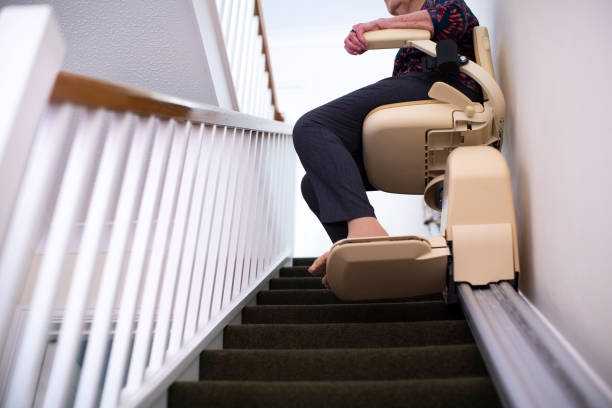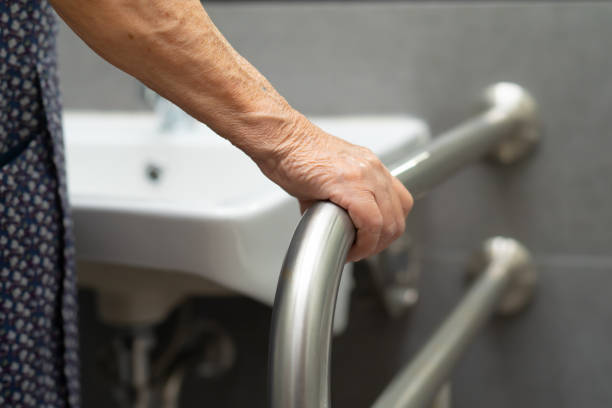As our loved ones age, their needs at home evolve, making it essential to create an environment that supports their physical well-being and provides a sense of comfort and independence. A senior-friendly home can significantly improve their quality of life, enabling them to remain active and engaged in their daily routines. In this guide, we’ll explore practical steps to create a safe, comfortable home for seniors, helping them maintain their autonomy and ensuring peace of mind for caregivers and family members.
Contents
- 1 1. Prioritize Accessibility and Mobility
- 2 2. Enhance Lighting for Visibility
- 3 3. Make Bathrooms Senior-Friendly
- 4 4. Optimize the Kitchen for Independence
- 5 5. Create a Comfortable and Relaxing Bedroom
- 6 6. Designate a Cozy Living Area
- 7 7. Implement Safety Monitoring Systems
- 8 8. Foster Social Connections
- 9 Final Thoughts
1. Prioritize Accessibility and Mobility

Many seniors experience decreased mobility, making it difficult to navigate certain areas of the home. Here’s how to enhance accessibility:
- Remove Tripping Hazards: Clear walkways of clutter, cords, and furniture that might obstruct paths. Consider removing rugs or securing them to prevent slips and trips.
- Install Grab Bars: Grab bars placed in bathrooms near the toilet, shower, and bathtub offer extra stability and reduce the risk of falls.
- Widen Doorways: Widening doorways can make it easier for seniors who use wheelchairs or walkers to move from room to room without assistance.
- Use Non-Slip Flooring: Non-slip mats in bathrooms and non-skid flooring throughout the home can reduce the likelihood of slipping, especially on smooth surfaces like tile or wood.
2. Enhance Lighting for Visibility
Good lighting is crucial in preventing accidents, especially as eyesight may decline with age. Some adjustments to consider:
- Install Motion-Sensor Lighting: Adding motion-sensor lights in hallways, bathrooms, and entryways can ensure that seniors always have sufficient lighting, even if they forget to turn a light on.
- Increase Natural Light: Open blinds or curtains to bring in as much natural light as possible. Adding lamps to dim areas in the home can also help improve visibility.
- Avoid Glare: Use soft, diffused lighting to reduce glare that may be uncomfortable or disorienting, particularly for seniors with vision issues like cataracts.
3. Make Bathrooms Senior-Friendly
The bathroom is one of the most common areas for falls and injuries. Implementing a few safety measures can greatly improve senior safety and comfort:
- Install a Walk-In Shower: Walk-in showers eliminate the need to step over a bathtub, reducing fall risk. Adding a shower seat offers a comfortable option for those who may find it difficult to stand for long periods.
- Lower Sink and Counter Heights: Consider lowering countertops or installing adjustable ones to make them easily accessible for seniors in wheelchairs.
- Place Essentials Within Reach: To minimize stretching or bending, keep frequently used items like towels, soap, and shampoo within easy reach.
4. Optimize the Kitchen for Independence
The kitchen is another area where accessibility and safety play a crucial role in helping seniors retain independence. Here are some ideas:
- Organize for Easy Access: Arrange dishes, utensils, and food items on lower shelves or in cabinets that are easy to reach. Using pull-out shelves or lazy Susans can make access even simpler.
- Install User-Friendly Appliances: Look for appliances with large, easy-to-read controls. Many newer models also have safety features, like automatic shut-off, which can be beneficial for seniors who may be forgetful.
- Consider a Hands-Free Faucet: For those with arthritis or limited hand mobility, hands-free faucets can make kitchen tasks much easier and safer.
5. Create a Comfortable and Relaxing Bedroom
The bedroom should be a peaceful retreat that offers comfort and accessibility. A few adjustments can make a big difference:
- Adjust the Bed Height: Make sure the bed is comfortable, allowing seniors to get in and out of bed easily without straining.
- Use Bed Rails if Needed: Bed rails can provide additional support for those who may need assistance transitioning from lying down to sitting up.
- Place Essential Items Nearby: A nightstand with a lamp, a phone, water, and any necessary medications within arm’s reach reduces the need to get up frequently, minimizing fall risk.
6. Designate a Cozy Living Area
The living area is often where seniors spend a lot of their time, so creating a comfortable and accommodating space is key:
- Choose Supportive Seating: Chairs with sturdy armrests and firm cushions can be easier for seniors to sit down and stand up from. Avoid low, soft couches that can be challenging to get out of.
- Arrange for Easy Navigation: Ensure that furniture is arranged to allow ample space for wheelchairs, walkers, or canes. Remove unnecessary pieces to avoid clutter.
- Include Items for Entertainment and Engagement: Access to hobbies like books, knitting supplies, or puzzles can help keep seniors engaged and mentally active.
7. Implement Safety Monitoring Systems
Adding monitoring systems can provide a sense of security for both seniors and their caregivers, especially for those who live alone:
- Emergency Alert Systems: Consider installing wearable devices or emergency alert systems that allow seniors to call for help if needed. Many of these systems also have fall detection, which can automatically notify caregivers.
- Install Smoke and Carbon Monoxide Detectors: Test alarms regularly and consider installing models that flash or vibrate, which are helpful for seniors with hearing impairments.
- Home Security Cameras: Cameras, particularly around entryways and common areas, can provide an extra layer of safety, especially if family members are checking in from afar.
8. Foster Social Connections
Beyond physical changes, creating an environment that encourages social interaction is important for mental well-being. Here are some ideas:
- Set Up a Comfortable Space for Visitors: Arrange seating for family or friends, encouraging social gatherings.
- Encourage Virtual Connections: Equip the home with simple technology to facilitate video calls, making it easier to stay in touch with loved ones.
- Community Engagement: If your loved one is interested, explore community programs or senior centers that can provide both social activities and support.
Final Thoughts
Creating a safe, comfortable home for seniors can greatly enhance their quality of life and provide peace of mind for loved ones. These adjustments are small but meaningful ways to maintain independence and help seniors enjoy their surroundings without worry. By focusing on accessibility, safety, and comfort, we can support our seniors in a home environment that respects their needs and enhances their well-being.

